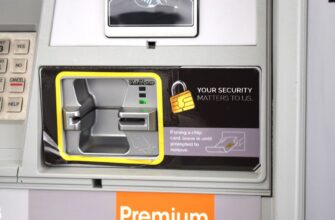## Why You Need a Hardware Wallet for Your Crypto
In the volatile world of cryptocurrency, security isn’t optional—it’s essential. Hardware wallets provide offline storage (cold storage) for your private keys, making them immune to online hacking attempts. Unlike exchange wallets or software alternatives, these physical devices keep your crypto assets secure even if your computer is compromised. With crypto thefts exceeding $3 billion in 2022 alone, investing in a hardware wallet is the smartest move for any serious investor.
## Top 5 Hardware Wallets Compared
### 1. Ledger Nano X
– **Key Features**: Bluetooth connectivity, supports 5,500+ coins, OLED screen, mobile app integration
– **Pros**: Portable, intuitive interface, staking capabilities
– **Cons**: Higher price point ($149)
– **Best For**: Active traders and multi-coin portfolios
### 2. Trezor Model T
– **Key Features**: Touchscreen display, open-source firmware, 1,600+ coin support
– **Pros**: Advanced security protocols, password manager feature
– **Cons**: No Bluetooth, bulky design ($219)
– **Best For**: Security-focused hodlers
### 3. Ledger Nano S Plus
– **Key Features**: USB-C connectivity, 100+ app installations, compact design
– **Pros**: Affordable ($79), beginner-friendly, NFT management
– **Cons**: Smaller screen, no Bluetooth
– **Best For**: Entry-level users and budget buyers
### 4. Trezor One
– **Key Features**: PIN protection, 1,000+ coin support, recovery seed backup
– **Pros**: Most affordable ($59), simple setup
– **Cons**: Outdated micro-USB port, no touchscreen
– **Best For**: Bitcoin-centric investors
### 5. KeepKey
– **Key Features**: Large display, ShapeShift integration, sleek aluminum body
– **Pros**: Excellent visibility, intuitive interface
– **Cons**: Limited coin support (40+), slower updates ($49)
– **Best For**: Minimalist portfolios
## Key Buying Considerations
– **Security Certifications**: Look for CC EAL5+ or higher (like Ledger’s secure element chip)
– **Coin Compatibility**: Verify support for your specific cryptocurrencies
– **User Experience**: Touchscreens simplify navigation
– **Price vs. Features**: Balance budget with necessary functionalities
– **Recovery Options**: Ensure straightforward seed phrase restoration
## Hardware Wallet Setup Guide
1. **Initialize Device**: Connect to official app (Ledger Live/Trezor Suite)
2. **Generate Seed Phrase**: Write down 24-word backup on provided card
3. **Set PIN**: Create 4-8 digit device access code
4. **Install Coin Apps**: Add blockchain-specific applications
5. **Transfer Funds**: Send small test transaction first
## FAQ: Your Crypto Security Questions Answered
**Q: Can hardware wallets be hacked?**
A: No successful direct hardware breaches exist. Physical access attacks require sophisticated tools and your PIN—always store devices securely.
**Q: What happens if I lose my wallet?**
A: Use your recovery seed phrase on a new device to restore funds instantly. Never store the phrase digitally.
**Q: Are hardware wallets compatible with DeFi platforms?**
A: Yes! Connect via WalletConnect to platforms like Uniswap while keeping keys offline.
**Q: How often should I update firmware?**
A: Install updates immediately—they patch vulnerabilities. Ledger/Trezor notify users automatically.
**Q: Is Bluetooth connectivity safe?**
A: Ledger Nano X uses encrypted BLE. For maximum security, disable Bluetooth when not transacting.
## Final Verdict
For unparalleled crypto protection, hardware wallets are non-negotiable. Our top pick—**Ledger Nano X**—delivers perfect balance between security, coin support, and usability. Whether you’re safeguarding $500 or $500,000, investing in cold storage ensures you control your assets, not hackers. Remember: Your keys, your crypto!








